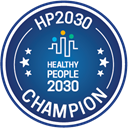Bureau of Health Equity
The Bureau of Health Equity (BHE) is comprised of the Office of Minority Health and the Office of Women’s Health. Emphasis is placed on health disparities regarding race, gender, age, socio- economic, sexual orientation and geographic locations.
Our vision is to ensure everyone in Delaware will achieve their full health potential by eliminating differences in health outcomes due to social determinants health. Inequities in health systematically put groups of people who are already socially disadvantaged (for example, by virtue of wealth, sex, sexual orientation or as members of an underserved racial, ethnic, or religious group) at further disadvantage with respect to their health.
Health inequities are historically entrenched and pervasive, but they are not insurmountable. We can be most effective by transforming our collective thinking from a perspective focused on treatment of individuals, to one that focuses on prevention, health, and wellness of the broader population.
Division Priorities:
- Provide relevant statistical data to assess and identify health status of such populations;
- Increase awareness of major health problems and factors that influence health;
- Identify needs and expand community-based health promotion and disease prevention outreach effort;
- Establish and strengthen networks, coalitions, and partnerships to identify and address health problems; and
- Collaborate with public health partners to develop and promote programs and best practices to achieve health equity.
"align="center"Frequently Asked Questions (FAQs)
What are health disparities?
The term health disparity refers to population-specific differences by disease and health outcome between two or more groups.
What are inequities?
Inequity refers to differences which are unnecessary, avoidable and are considered unfair and unjust. The word “inequity” is political, implies judgment and is correctible.
What is health equity?
Health equity is the absence of systematic disparities in health (or in the major social determinants of health) between groups with different levels of underlying social advantage/disadvantage—that is, wealth, power, or prestige.
What are Social Determinants of Health?
Social Determinants of Health are conditions in the environments in which people are born, live, learn, work, play, worship, and age that affect a wide range of health, functioning, and quality-of-life outcomes and risks.
How is Health equity achieved?
According to the CDC, Health equity is achieved when every person has the opportunity to “attain his or her full health potential” and no one is “disadvantaged from achieving this potential because of social position or other socially determined circumstances.”

The Health Equity Guide for Public Health Practitioners and Partners is designed to help schools, workplaces, businesses, places of worship, and health care settings adopt policies that promote health. The guide was produced by the Division of Public Health, the University of Delaware’s School of Public Policy & Administration, and other partners.
Below are two reports from Partnership for Healthy Communities, University of Delaware:
- Structural Racism as a Fundamental Cause of Health Inequities
- Delaware Focus: Health Inequities and Race in the First State
Currently, the Division of Public Health is implementing CLAS Standards. The National Standards for Culturally and Linguistically Appropriate Services in Health and Health Care (the National CLAS Standards) are intended to advance health equity, improve quality and help eliminate health care disparities by providing a blueprint for individuals and health and health care organizations to implement culturally and linguistically appropriate services. For a complete list of the standards with explanation, please see: https://thinkculturalhealth.hhs.gov/assets/pdfs/EnhancedNationalCLASStandards.pdf
Health Equity & Culturally and Linguistic Appropriate Services (CLAS): How Are They Connected?
Health inequities in our nation are well documented, and the provision of culturally and linguistically appropriate services (CLAS) is one strategy to help eliminate health inequities. By tailoring services to an individual’s culture and language preference, health professionals can help bring about positive health outcomes for diverse populations. The provision of health care services that are respectful of and responsive to the health beliefs, practices and needs of diverse patients can help close the gap in health care outcomes. The pursuit of health equity must remain at the forefront of our efforts; we must always remember that dignity and quality of care are rights of all and not the privileges of a few. For more information on CLAS standards, visit: https://thinkculturalhealth.hhs.gov/assets/pdfs/class-infographic-what-why-how.pdf
Social Determinants of Health
The social determinants of health are the conditions in which people are born, grow, live, work and age, including the health care system. These circumstances are shaped by the distribution of money, power and resources at global, national, and local levels. The social determinants of health are mostly responsible for health inequities, the unfair and avoidable differences in health status seen within and between countries (World Health Organization, 2012). Some of the social determinants of health include income, education, housing, culture and customs, occupation, health behaviors (drinking, smoking, drug use, exercise), and stress.
Division Priorities:
- Provide relevant statistical data to assess and identify health status of such populations;
- Increase awareness of major health problems and factors that influence health;
- Identify needs and expand community-based health promotion and disease prevention outreach effort;
- Establish and strengthen networks, coalitions, and partnerships to identify and address health problems; and
- Collaborate with public health partners to develop and promote programs and best practices to achieve health equity.
Visit our other pages for more information and useful links:

![]() Please note: Some of the files available on this page are in Adobe PDF format which requires Adobe Acrobat Reader. A free copy of Adobe Acrobat Reader can be downloaded directly from Adobe . If you are using an assistive technology unable to read Adobe PDF, please either view the corresponding text only version (if available) or visit Adobe’s Accessibility Tools page.
Please note: Some of the files available on this page are in Adobe PDF format which requires Adobe Acrobat Reader. A free copy of Adobe Acrobat Reader can be downloaded directly from Adobe . If you are using an assistive technology unable to read Adobe PDF, please either view the corresponding text only version (if available) or visit Adobe’s Accessibility Tools page.



